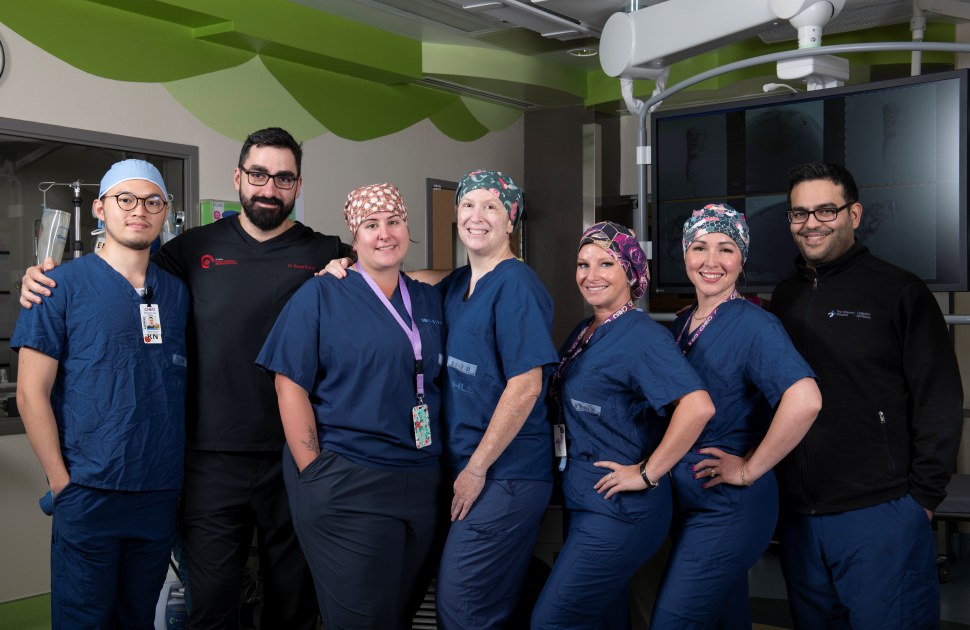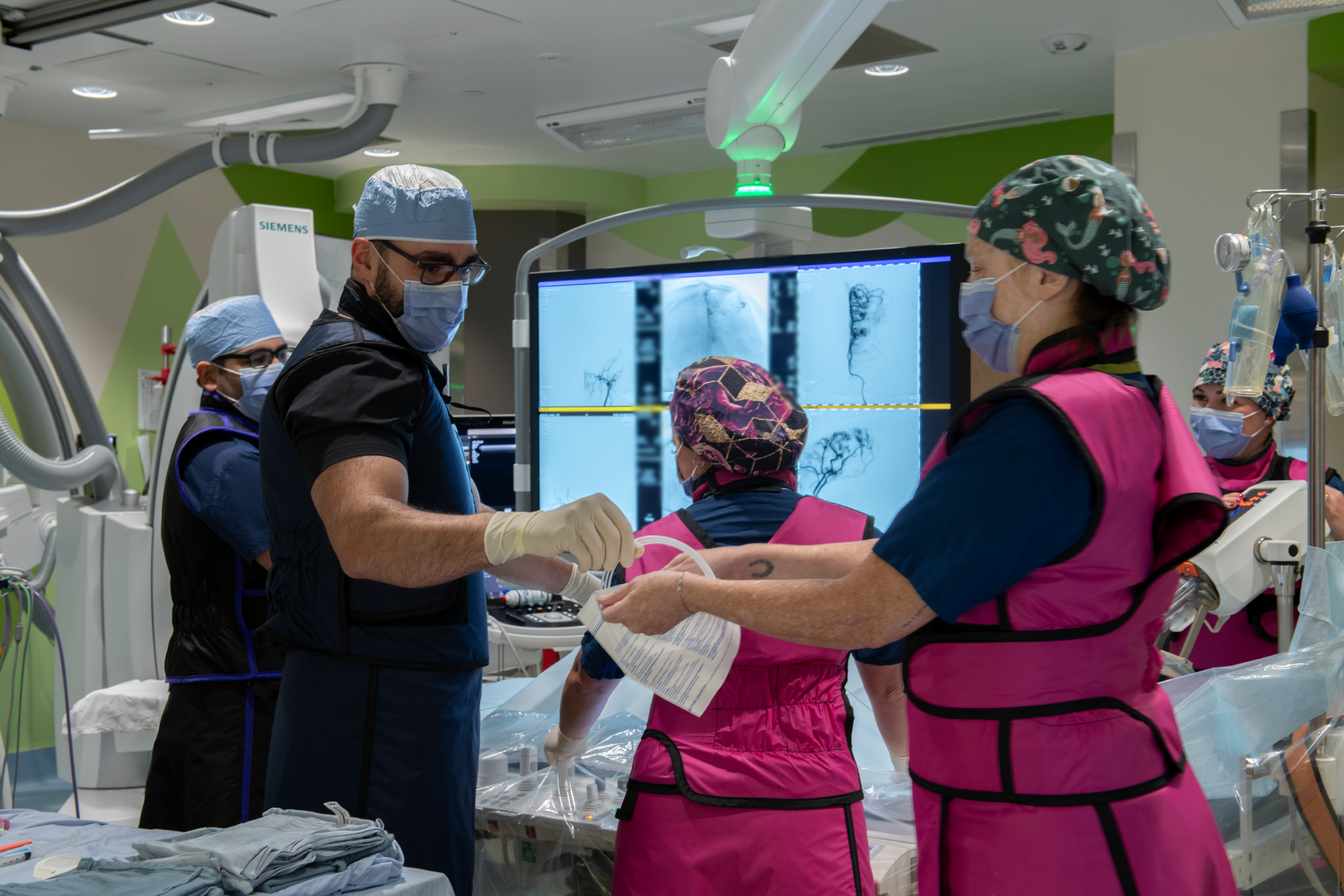
Camryn’s migraines were getting more painful and persistent. Then there was a constant whooshing sound in her ear.
The 16-year-old has dealt with chronic migraines in the back of her head and upper neck for years, but this time the situation became critical.
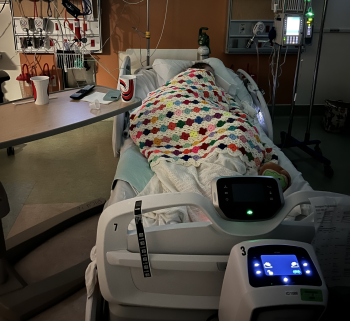 A series of visits to local emergency rooms and clinics in Belleville and Kingston quickly escalated into a medical mystery—one that would ultimately be solved thanks to the expertise and innovation of CHEO’s Interventional Neuroradiology (INR) team and a specialized neuro-interventionalist from The Ottawa Hospital.
A series of visits to local emergency rooms and clinics in Belleville and Kingston quickly escalated into a medical mystery—one that would ultimately be solved thanks to the expertise and innovation of CHEO’s Interventional Neuroradiology (INR) team and a specialized neuro-interventionalist from The Ottawa Hospital.
Camryn’s journey shows why CHEO’s decision to bring complex INR procedures in-house has been transformative for patients and families. Previously, children requiring these specialized interventions had to be transferred to children's hospitals in Montreal or Toronto, or in certain cases to The Ottawa Hospital’s Civic Campus.
This caused delays and logistical challenges and increased the emotional toll on patients and families because it required moving critically ill children between facilities.
Now, with a fully equipped IR Cath Lab— thanks to generous donations from the community to the CHEO Foundation, including $2 million from Canadian Pacific — and a trained, dedicated team of specialists, CHEO can provide life-changing, and in some cases life-saving procedures on-site.
Care is delivered quickly and safely, closer to home for patients and families, while ensuring continuity of care.
Camryn’s procedure was an urgent case. After weeks of debilitating symptoms and inconclusive diagnoses, her mom Adrienne Woods said a pediatric ophthalmology resident in Kingston identified severe swelling of her optic nerves—called Grade 4 papilledema—suggesting there was dangerously high intracranial pressure around her brain.
“It was horrible, it was confusing. I was in a lot of pain and couldn’t eat or drink,” Camryn said.
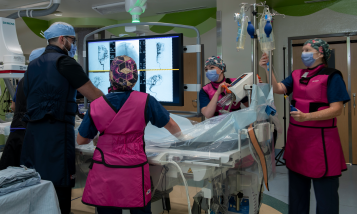 A CT scan and lumbar puncture confirmed the pressure was more than double the normal level. The cause: a constricted vein in her brain due to intracranial hypertension.
A CT scan and lumbar puncture confirmed the pressure was more than double the normal level. The cause: a constricted vein in her brain due to intracranial hypertension.
Without treatment, she could go blind.
Transferred to CHEO for further evaluation, Camryn was assessed by pediatric neurosurgeon Dr. Munyao Nzau, who then brought in neuro-interventionalist Dr. Robert Fahed from The Ottawa Hospital.
Within hours, Fahed, his fellow, and CHEO’s INR team — including two medical radiation technologists, a nurse, an anesthesiologist and an anesthesia assistant —performed a minimally invasive, but urgent procedure.
Through a tiny incision in Camryn’s groin, a stent was carefully inserted in her head to relieve the pressure in her brain. The results were immediate: the whooshing sound in her ear disappeared, the pain eased, and the pressure equalized instantly.
"I felt 10 times better, and relieved,” Camryn said.
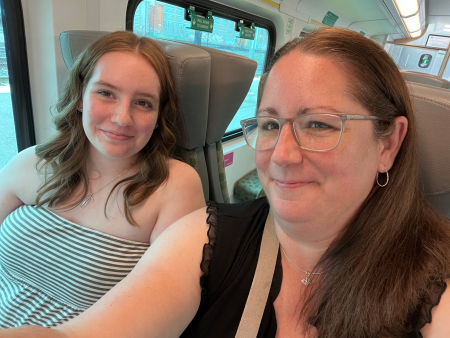 Despite operating on her brain, there was no visible scarring on any part of her body. All that was left was a small bandage on her groin.
Despite operating on her brain, there was no visible scarring on any part of her body. All that was left was a small bandage on her groin.
The procedure saved Camryn's eyesight, and she went home the next day.
It showed the importance of eliminating delays and improving access to care. The ability to perform these procedures at CHEO means faster treatment, reduced risk, and less stress for families.
“Faster access means better patient care and better outcomes,” said Krystina Chartrand, nurse, and care facilitator in CHEO's Medical Imaging department.
Since the IR Cath Lab opened in October 2022, the team has performed dozens of complex procedures to change blood flow, including AVM rupture repairs, embolizations, and clot removals. What was once expected to be a low-volume program has exceeded expectations, with one to two procedures performed each month.
“Thanks to huge efforts from CHEO over the last few years, we are one of the few centres who can do this,” said Fahed.
Camryn’s story is a powerful example of how innovation, collaboration, and timely care can change lives. Today, she’s back at school and looking ahead to her future.
She still requires monitoring —and possibly a second procedure—and deals with headaches, but her story is a testament to the impact of CHEO’s innovation and evolution.
It is part of how CHEO is growing and transforming to provide the best care to kids today and in the future.

